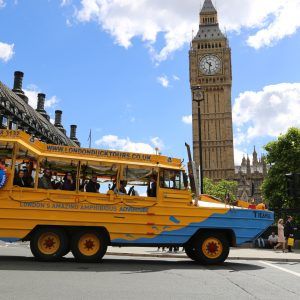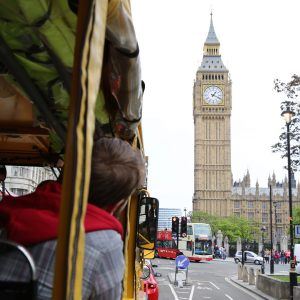Surely in the top five most well-known sights in the capital, The Tower of London is one of the world’s best known buildings. The White Tower, the oldest section of the Tower of London dates from the 1070s, the very earliest years of William the Conqueror’s reign. Made of a luminous white Caen stone brought over from France, it was designed to strike fear and awe into the hearts of the conquered English that would have viewed this mighty and imposing structure as something from another world. Nothing since the times of the Romans had a building been constructed on such a grand scale.
Throughout its history it has served as a royal residence, fortress, a home for the Royal Mint and safe house for the Crown Jewels, a “menagerie” or zoo with lions, bears and elephants, a notorious prison and a military armory.
The Tower of London – a mix of fact, fiction and fairytale.
With its ravens, Beefeaters, ghosts and gruesome executions, it’s no wonder the Tower of London receives more than two million visitors per year. However it has only been an official “tourist attraction” since Victorian times. This really was a well defended working fortress, a symbol of military and royal strength, to protect our Kings and Queens from their enemies and sometimes, their own subjects. The Tower is remarkably well preserved. The site we see today looks very similar to how the completed Tower of London looked in 1350. The Tower’s study medieval stone walls even survived a direct hit during World War II, whilst its drained, grassy moat was used for growing much needed fruit and vegetables.
Dark and Deadly Deeds
Many notorious and dark stories of murder, execution and ghosts are linked to the Tower. Starting in 1483, a 12 year old Prince Edward and his younger brother Richard where imprisoned by their dastardly uncle Richard III – but were never released or seen again. The Princes in The Tower mystery still remains unsolved – although small two skeletons found under a staircase in the 1600s were thought to be the missing princes.
The Tudor period saw a bevy of bloodshed and gore at the Tower of London. Anne Boleyn, Lady Jane Grey and Catharine Howard were all beheaded within the Tower’s walls. In 1941, German Josef Jakobs became the last person to be executed at the Tower.
Ravens, Beefeaters and Tourists!
Although today the Tower of London is a highly popular tourist attraction and posh events venue, it still retains the official title of a Royal Palace. Although the zoo, prisoners, mint and crown jewels have long since been moved to other more suitable locations, the Beefeaters are still there!
The Beefeaters, or to give them their full title of Yeomen Warders of Her Majesty’s Royal Palace and Fortress the Tower of London, and Members of the Sovereign’s Body Guard of the Yeoman Guard still perform ceremonial guardian duties at the Tower. They also do fine work as tour guides and, in their quaint bright red and gold Tudor uniforms, are a tourist attraction in their own right.
Legend has it if the famous black ravens should ever leave the Tower of London, both the Tower and the kingdom will fall…so Duck Tours is rather glad that the Beefeaters keep a group of semi tame ravens permanently at the Tower. Phew.
Did you know – The grim fate of the Cousin Queens?
Hauntings and ghouls have long been a feature of the Tower of London, the most famous being the headless ghost of Queen Anne Boleyn, executed in 1536, and supposedly seen in The Queen’s House. However that part of the tower wasn’t built until six years after the Queen’s death. Perhaps the ghost is that of her unfortunate cousin, Catherine Howard, who also met a grisly end some six short years after Anne.



















